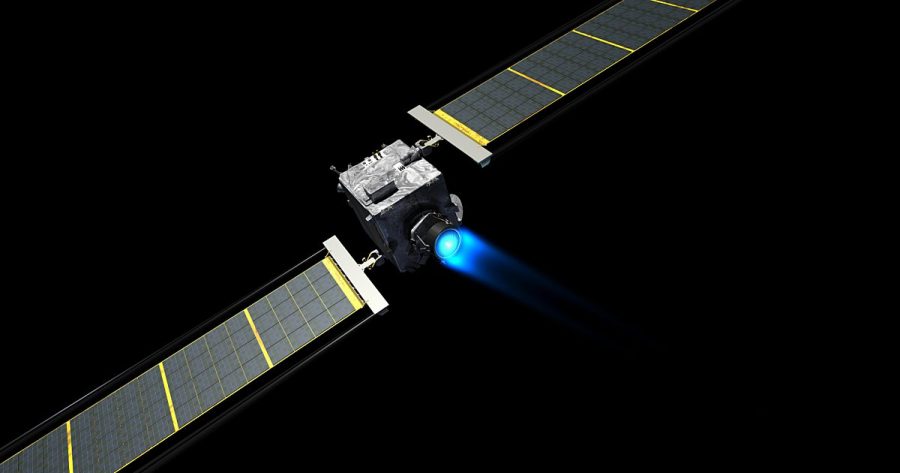NASA Has Launched a Spacecraft to Test Planetary Defense Efforts
The spacecraft will slam head-on into an asteroid to slightly knock it off course.
December 8, 2021
A concept that sounds like a movie plot has become a reality. “A lot of times when I tell people that NASA is actually doing this mission, they kind of don’t believe it at first, maybe because it has been the thing of movies,” says Nancy Chabot, a planetary scientist at the Johns Hopkins University Applied Physics Laboratory. The DART spacecraft, short for Double Asteroid Redirection Test, was lifted from Vandenberg Space Force Base atop a SpaceX Falcon 9 rocket. The golf-cart-size spacecraft will travel to an asteroid that’s more than 6 million miles away and will ram into it. Scientists will then watch to see how the asteroid’s trajectory changes.
The asteroid that is being targeted by DART is not a threat to the planet now, and Chabot says that the mission won’t make it one either. “There is absolutely no way that the DART test is a threat to the Earth,” she says. The spacecraft will travel towards an asteroid called Didymos, which is about 2,500 feet across. Didymos is orbited by a smaller asteroid called Dimorphos, which is about 525 feet across and is the main target. The spacecraft will orient itself by aiming for the larger asteroid and will then detect and switch to the smaller asteroid in the final hour of its course. If all goes well, the spacecraft will slam head-on into Dimorphos in September 2022.
The test isn’t meant to destroy the asteroid, its meant to alter its course. “This isn’t going to destroy the asteroid. It’s just going to give it a small nudge,” Chabot says. Dimorphos completes one orbit of Didymos every 11 hours, 55 minutes. DART’s goal is to crash into Dimorphos to slow it down and cause it to fall closer toward Didymos, which will shave off 10 minutes off its orbit. The change in the orbital period will be measured by telescopes on Earth and minimum change for the mission to be considered a success is 73 seconds. According to NASA, this is just the beginning of many planetary defense efforts.
In 2024 the European Space Agency is expected to launch a mission that will travel to the two asteroids to observe the crater on Dimorphos and determine the mass of the asteroid. The results will help NASA and other space agencies understand the possibilities of a “kinetic impact deflection” approach if an asteroid heads towards Earth in the future. After this test, NASA wants to try out other asteroid deflection techniques like the so called “gravity tractor” approach, which involves stationing a spacecraft near an asteroid to apply a small tug of gravity.




















